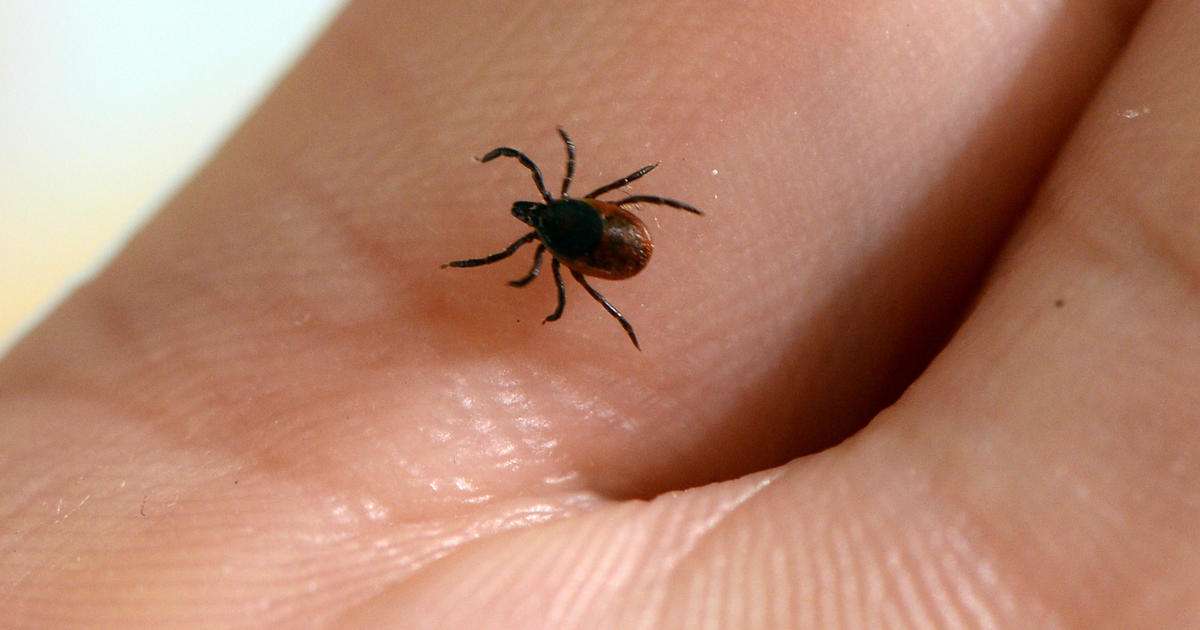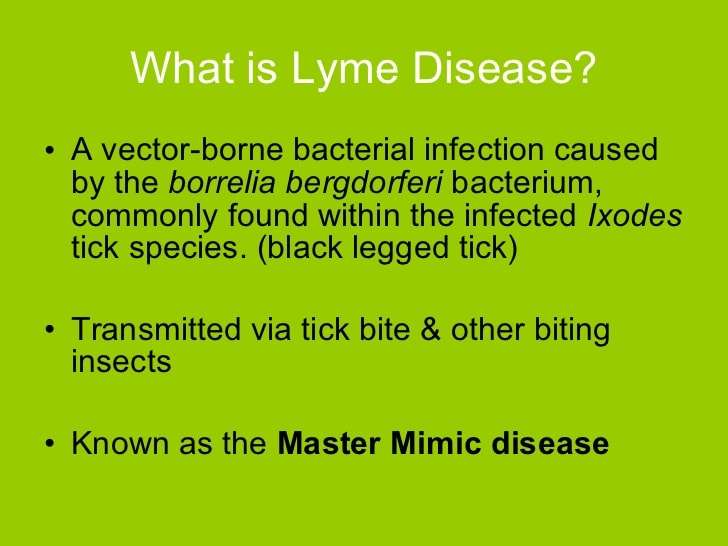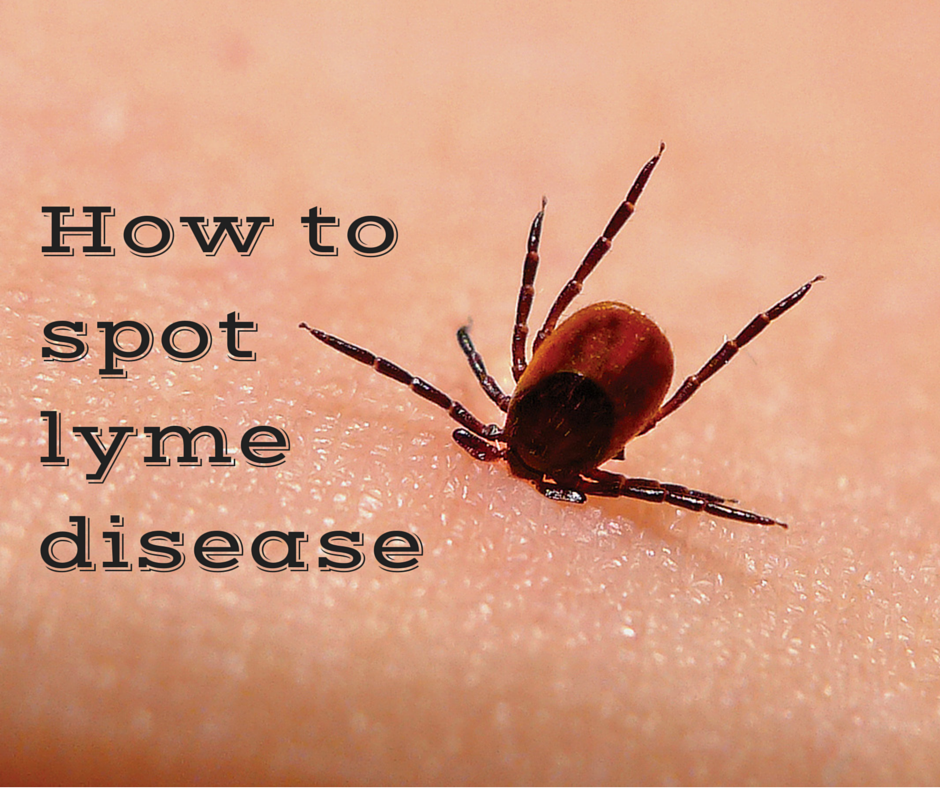What Is A Deer Tick
Deer ticks also called black-legged ticks are tiny arachnids that measure about one-eighth of an inch once they reach adulthood. Larvae, on the other hand are about the size of a pinhead. Their bodies are dark brown to black and they have dark legs, and, regardless of maturity, all deer ticks need a blood meal to grow.
The deer tick is primarily found in the eastern United States, particularly the Northeast. Their preferred habitats include wooded areas and fields. Over the years, this arachnid has gained a pretty bad reputation as it is well known for being a carrier of the bacteria that can cause Lyme disease in humans and their pets.
Symptoms Of Lyme Disease
Lyme disease, when left untreated, can have multiple symptoms. These symptoms vary depending on the stages of infection. Some of the common symptoms in its early stages of infections include
The appearance of a rash usually from three to 30 days after an infected tick bite. The rash manifests as an expanding red area on your arm. After some time, it will clear in the center resulting in a bulls-eye pattern. The rash neither itches nor pains, but instead feels warm to the touch.
The other symptoms likely to be experienced in the early days are fever, chills, fatigue, body aches, headache, stiffness of the neck, and swollen lymph nodes. All of these accompany the rash.
Over a prolonged time of infection, the disease results in Erythema migrans. This means the rash starts to appear on other parts of the body as the bacteria spreads. Joint pains may start shifting from one joint to another. The problems get severe, with some swelling that may affect your knees.
The disease may also lead to the inflammation of the membranes surrounding the brain, causing neurological problems. Temporary paralysis, numbness, and impaired muscle movement are also common long term symptoms of Lyme disease.
What Causes Lyme Disease
Lyme disease is caused by bacteria that is spread to humans by tick bites. The ticks that carry the spirochete are:
-
Black-legged deer tick
-
Western black-legged tick
Ticks prefer to live in wooded areas, low-growing grasslands, and yards. Not all ticks carry the Lyme disease bacteria. Depending on the location, anywhere from less than 1% to more than 50% of the ticks are infected with it.
While most tick bites are harmless, several species can cause life-threatening diseases. Tick-borne diseases include:
-
Rocky Mountain spotted fever
Don’t Miss: Lyme Nephritis Symptoms In Dogs
Which Ticks Carry And Transmit Lyme Disease
Not all bugs are what youd call dangerous. Flies are usually little more than a nuisance. And while the occasional ant bite is frustrating, its rare to have a severe allergic reaction.
Some bugs, though, need to be avoided. Ticks are one such example. Aside from the fact that they have the repulsive habit of attaching themselves to you and sucking your blood, ticks are capable of spreading a wide range of diseases.
One disease commonly associated with ticks is Lyme disease. However, not all ticks are capable of carrying and spreading Lyme disease. In fact, only a handful of tick species transmit disease.
Are you wondering which species of tick are capable of infecting you with Lyme disease? Keep reading to find out.
Treatment Following A Tick Bite

- In some circumstances, a single dose of antibiotic given within 72 hours of a tick bite might prevent the development of Lyme disease. Several criteria must be met:
- The tick must be identified as the blacklegged tick .
- The tick must have been attached for at least 36 hours .
- The tick bite occurred in a highly endemic area
Also Check: Bee Venom Therapy For Lyme Disease
What Is Lyme Disease Anyway
Lyme disease is the most prevalent tick-borne disease in the United States. Its caused by a bacterium named Borrelia burgdorferi. According to some sources, each year there can be up to 30,000 new cases of Lyme disease diagnosed. And that number doesnt factor in cases that are undiagnosed or misdiagnosed, meaning there may be a lot more people who are infected.
Where Are Ticks That Carry Lyme Disease Found
Ticks that carry Lyme disease can be found anywhere their hosts live, in short, anywhere in the world. They prefer moist shady areas. The phrase deer tick, the name commonly used for the species of ticks that carry Lyme disease, is somewhat of a misnomer. Although deer are important as reproductive hosts in the lifecycle of these ticks, other vertebrate animals actually infect the ticks with disease organisms not the deer. These animals include white-footed mice, chipmunks, shrews, several species of ground feeding birds , and many other small mammals. Lyme disease ticks can be found in:
- Leaf litter
- Tall grass, bushy areas and beach grass
- Areas planted with pachysandra or other ground covers
- Lawn perimeters where they meet forest, woodlot or garden edges
Read Also: Can You Get Over Lyme Disease
Which Ticks Should I Worry About
Nymphal ticks cause most cases of Lyme disease. Because nymphs are as small as poppy seeds and their bite is painless, people often dont realize they have been bitten. Adult ticks can also infect humans, but are easier to spot and remove.
Not all ticks are infected. Because tick studies have only been done in a relatively few places, in most of the US, tick infection rates are unknown. Even in places where ticks generally do not carry Lyme, there may be hotspots of infection depending on local conditions. The tick infection rate may also change from year to year, even in one location.
To get a better idea of which tick-borne diseases have been found in your area, check this site.
What Can A Workplace Or Home Do To Reduce The Presence Of Ticks
Keep the lawn and yard well maintained to prevent ticks from living near the home or workplace.
- Keep the grass mowed. Trim trees and shrubs.
- Remove leaf litter, brush, and weeds at the edge of the lawn, and around stonewalls and woodpiles.
- Clean up and seal stonewalls and small openings around the home to help discourage rodents.
- Keep stacked firewood piles and bird feeders away from buildings.
- Keep any pets, particularly dogs, out of the woods and talk to your veterinarian about tick repellents for your pets.
- Move children’s swing sets and sandboxes away from the woodland’s edge and use a woodchip or mulch foundation.
- Consider using hard landscape items such as woodchips, mulch, stones, gravel, tile, or metals.
- Create a border or barrier between the lawn, woods, or stonewalls to discourage deer and rodent activity.
- Widen woodland trails.
Recommended Reading: Signs Of Chronic Lyme Disease
What To Do If You Find A Tick
With ticks being prevalent in the United States, theres a chance youll experience a tick bite at some point in your life.
Keep in mind that not all ticks carry disease and that finding them on your skin early reduces the chance theyll transmit illness to you.
Make sure you check your body after spending time outdoors or near your pets. Make sure to check your pets and children for ticks as well.
You probably wont feel a tick bite, but will see it attached to your skin or feel it if its on an area of your body that you cant see, such as your scalp or back. Follow these steps if you have a tick attached to your skin:
- Remove the tick if its attached to your body with tweezers.
- Use the tweezers to grasp the tick as close to the skins surface as possible.
- Try to pull it out directly without twisting or jerking your hand. This will ensure that youll get the entire parasite out of your body.
- Clean the bite site as well as your hands after removal.
Dont try to remove the tick with substances like petroleum jelly or alcohol.
There are several ways you can prevent tick bites:
If you develop a concerning rash or flu-like symptoms within several weeks of a tick bite, talk with your doctor immediately.
You may also have these symptoms without ever spotting a tick on you.
One sign of Lyme disease is a bulls-eye rash that radiates out of the tick bite. You may see this rash even if the tick fell off your body before you spotted it.
Warning Signs Of Lyme Disease
While Lyme disease is always transmitted by the deer tick, not all deer ticks carry Lyme disease. Due to their small size compared to other tick species, visual detection is unreliable. According to the CDC, it takes 24-36 hours after a deer tick attaches to the host to transmit Lyme disease. It is usually not the tick you see that spreads the bacteria it is the tick you do not. Therefore, the best way to detect Lyme disease is by looking for the warning signs of infection.
The first sign of a tick bite or removal is a small red bump. This is common for all tick bites and should resolve itself within a few days. Early symptoms that indicate Lyme disease occur within one month of being infected, and later signs may appear up to months after. Knowing the signs and symptoms of Lyme disease is crucial for your safety. Prompt treatment for Lyme disease will not only clear up the symptoms but can also save your life.
Recommended Reading: Doxycycline For Lyme Disease Side Effects
How Long Does It Take The Tick To Transmit Lyme
Experts disagree about how long it takes a tick to transmit Lyme disease. The CDC says that in most cases, the tick must be attached more than 24 hours.
We think that gives people a false sense of security. In some research studies, 5-7% of nymphs transmitted the Lyme bacteria in less than 24 hours. One paper reported on a case of Lyme disease transmitted after six hours of tick attachment. The risk may be low the first day, but its not zero.
Furthermore, some studies show that only 30% of patients with Lyme disease recall a tick bite. If people dont even realize that they were bitten, how could they know how long the tick was attached?
The longer a tick stays on you, the more likely it will transmit disease. Its important to find and remove any tick as soon as possible.
Keep A Lookout For Symptoms From Tick Bite This Summer

Have you checked yourself or your child for tick bites lately?
If you havent already heard, this summer is a particularly booming year for tick populations across the country and in the state of Ohio. A black-legged tick , the kind that sometimes carries Lyme disease, was spotted just to the east of us in Vermilion earlier this summer. And Ohio is on the list of 24 states that contains counties with newly documented populations of deer ticks.
Tick bites are common. Some people are unaware of a tick bite at first. Be sure to check yourself and your children often, especially throughout the summer months when tick populations grow. Ticks are especially attracted to warm, moist areas of the skin like armpits, groins, or hair. Once they bite you, a tick may stick around drawing your blood for up to 10 days. The sooner you spot and remove a tick, the better.
You May Like: Side Effects Of Lyme Disease In Dogs
What Are The Signs And Symptoms Of Lyme Disease
Tick bites are usually painless and most people do not know they have been bitten. Signs and symptoms of Lyme disease vary greatly from person to person, and may appear anywhere between 3 to 30 days after a person has been bitten.
Symptoms often include:
- Swollen lymph nodes.
- Skin rash.
One sign of infection can be an expanding rash, sometimes referred to as a “bull’s eye” rash because it may have rings spreading from the bite site ). It is important to note that rashes without the bull’s eye may occur, and that rashes do not appear in every case of Lyme disease infection.
The PHAC states that if left untreated, more severe symptoms may occur and can last from months to years. Severe symptoms may include:
- Severe headaches
- Additional EM skin rashes..
- Neurological disorders
- Nervous system disorders, including facial paralysis or Bell’s palsy .
- Intermittent muscle, joint, tendon, and bone aches
- Arthritis with severe joint pain and swelling, particularly the knees and less commonly in other joints such as the ankle, elbow, and wrists.
If untreated, a condition called late disseminated Lyme disease may occur. PHAC reports symptoms include recurring arthritis , nervous system and/or neurological problems. Symptoms can also include numbness and/or paralysis . Deaths from Lyme disease are rare but may occur.
PHAC provides more information on Lyme Disease.
Are Ticks Common In Alberta
Common ticks found in Alberta There are a number of tick species found in Alberta. However, the tick that most people become concerned with carries the bacteria that can cause Lyme disease. The most common species in Alberta known to carry the bacteria that causes Lyme disease, is the blacklegged tick .
Read Also: Does Lyme Disease Cause Back Pain
You May Like: How Do You Get Tested For Lyme Disease
When To See A Doctor
Anyone who develops a rash or fever in the weeks following a tick bite should contact their doctor.
It can help to make notes about the bite, such as when it occurred and any symptoms that appeared after the bite. Taking pictures of the bite or the tick itself may also assist a doctor with diagnosis.
How To Identify Deer Ticks
KPixMining/Shutterstock.com
The first step to minimizing the risk of contracting Lyme disease is knowing how to properly identify a deer tick. Some other species, such as the dog tick, can appear like the deer tick. However, the dog tick has white markings on its underside where the deer tick is a solid color. Adult deer ticks are the size of a sesame seed, with a shield-like scutum behind the head, reddish-brown lower bodies, black legs, and heads. Larval or nymph deer ticks are even smaller, the size of a poppy seed or even the head of a pin. Adult ticks have the expected eight legs that mark an arachnid, while larval ticks only have six.
Read Also: Old Lyme Beach Homes For Sale
Male Deer Ticks And Lyme Disease
Multiple species of deer carry Lyme disease. But according to research, male deer ticks are non-vectors of Lyme disease. Like the other female ticks, male deer ticks appear to attach to a host but do not suck blood. This means without sucking on blood the ticks cannot transmit Lyme disease. Only the adult female deer ticks are responsible for the transmission of the disease.
Should I Be Tested For Lyme Disease After A Tick Bite
Lyme testing relies on detecting antibodies the bodys reaction to the germ not the germ itself. It takes time for the body to make antibodies, at least a couple of weeks after you have become infected. Someone with symptoms of very early Lyme disease is likely to have a negative Lyme antibody test. On the other hand, false positive Lyme tests can happen, so someone without symptoms of Lyme disease who tests positive is unlikely to really have the disease. Testing for Lyme disease shortly after a tick bite is not helpful, says Dr. Baer and may lead to a prescription for a medication that you just dont need.
Read Also: Lyme Laser Center Andover Ma
Early Signs And Symptoms
Where Can I Get More Information

- For questions about your own health, contact your doctor, nurse, or clinic
- For questions about diseases spread by ticks, contact the MDPH at 983-6800 or online on the MDPH Tickborne Diseases website . You may also contact your local Board of Health .
- Health effects of pesticides, MDPH, Bureau of Environmental Healthat 624-5757
Chinese, Haitian Creole, Portuguese, Spanish, and Vietnamese translations of this fact sheet are available under additional resources.
Recommended Reading: Lyme Disease Symptoms And Treatment
Human Cases Of Lyme Disease In Canada
Between 2009 and 2021, provincial public health units have reported 14,616 human cases of Lyme disease across Canada.
Number of human reported Lyme disease cases from 2009 to 2021
| Year | |
|---|---|
| Preliminary 2021 | 2,851 |
Reported Lyme disease cases are from those who got the disease while in Canada or while abroad . The 2016 to 2021 Lyme disease cases are reported based on 2016 the Lyme disease case definition. Theres under-reporting because some cases are undetected or unreported.
All 10 provinces voluntarily provided data over the 13-year period. Territories havent reported any cases to the Public Health Agency of Canada since Lyme disease became nationally notifiable in 2009. This is because they havent had any Lyme disease cases.
Nationally notifiable diseases are infectious diseases identified by the federal, provincial and territorial governments as priorities for monitoring. Provinces and territories report annual notifiable disease data to the federal government. This helps the Public Health Agency of Canada monitor trends within provinces and across the country.